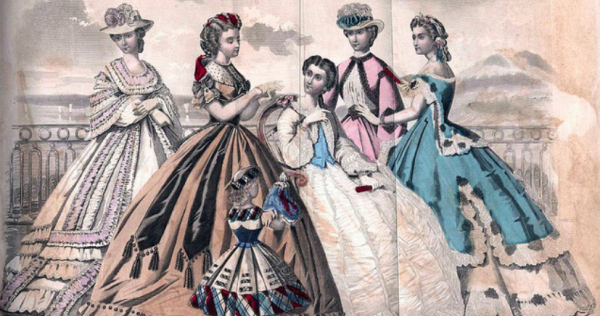
My grandmother adorned her bathroom walls with Toulouse-Lautrec and Degas reproductions of dancing women and, in the corner, a doll whose crocheted skirt covered a full roll of toilet paper.
Toilet roll dollies: their origin seems shrouded in mystery. Sometime in the 1960s or 1970s, they arose, multiplied, and inhabited bathrooms in the United States, England, and Australia. A phenomenon little studied by academia, the bathroom doll population poses questions for science: why cover a fresh roll, and why employ a female doll whose dress must be lifted to extract the paper?
My in-depth searching on the topic uncovered few details. I did discover almost everyone who writes about toilet roll dollies mentions their grandmother. But no one seems to know why or exactly when they arose or where they have gone.
I began my investigation with Aurora Sherman of Oregon State University, whose research has correlated girls’ play with Barbies to a restricted range of adult career choices. “I can’t answer that with any specificity,” she said when asked about the dolls’ origins. “It seems totally weird to me.” She also asked if anyone had used a male figure for these “cozies” and wondered, “If it doesn’t have some meaning, why is it limited to women?”
I suspect that the ability to hoard an extra roll of toilet paper, or even to buy toilet paper, is connected to the rise in social status the generation represented by my grandparents experienced over the course of the 20th century. My grandmother was born into a family of Russian Jewish immigrants who scraped a living in the slums of London’s East End. Although I can no longer ask her—she died in 2004 at the age of 98—I suspect that toilet paper was unaffordable for her family when she was a child.
In the United States, toilet paper on a roll was popularized in 1890 by Clarence and E. Irvin Scott. The Scott brothers did not initially sell the product under their name because they did not want to associate the family with such a “lewd” product.
The association with evacuation would explain why people feel moved to cover the toilet roll. But why with a woman’s dress? According to a history of toilet paper, the product was first marketed as a medicinal. In 1928, however, the Hoberg Paper Company began promoting Charmin with an illustration of an elegant woman’s head. (She was later replaced by chubby babies to “symbolize the gentle softness and quality.”) The obvious advantage of the successful campaign, Linda Rodriguez McRobbie writes in Mental Floss, “was that by evincing softness and femininity, the company could avoid talking about toilet paper’s actual purpose.” Perhaps the crocheted doll’s dress serves the same role.
I can’t help noticing a resemblance between the outfits of toilet roll dollies and certain periods of late Victorian fashion, when “ridiculously large crinolines, protruding bustles and heavily boned corsets often did restrict movement and the range of activities women could engage in,” according to the Victoria and Albert Museum in London. Not unlike the toilet roll doll, the skirts of these dresses “had to be supported by layers of heavy petticoats which were very hot and unhygienic—particularly in the summer.” The ensembles were so cumbersome, in fact, that using the toilet was a complicated act.
Such designs still show up from time to time, and oddly enough are often associated with the toilet roll doll. They include recent gowns by fashion collective Sibling, whose spring-summer 2015 collection, based on 1980s New York street fashion and described as “young, pretty, frills, flowers, sunshine, being happy,” features giant-bowed ruffled-skirted models labeled on Twitter by The Sunday Times of London as “Toilet Roll Catwalk Dolly.” To which the designer jokingly responded, “It was know[n] as the Loo-Dolly-Look at Sibling HQ. In an affectionate way, of course!”

